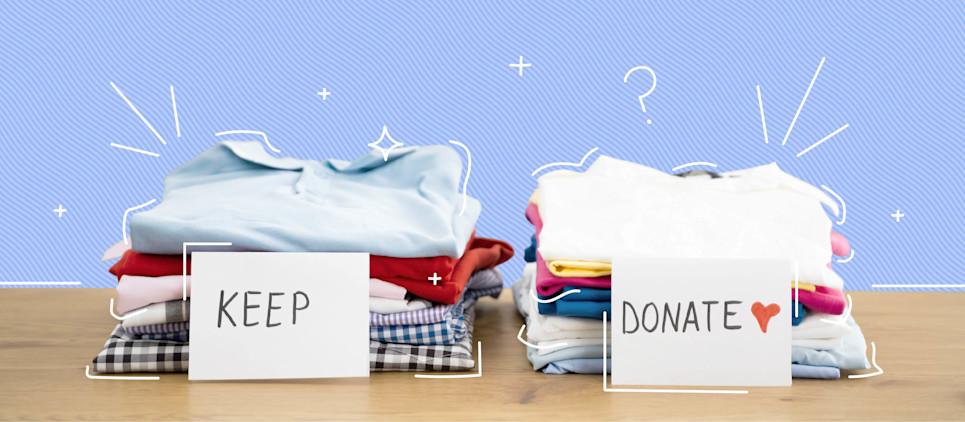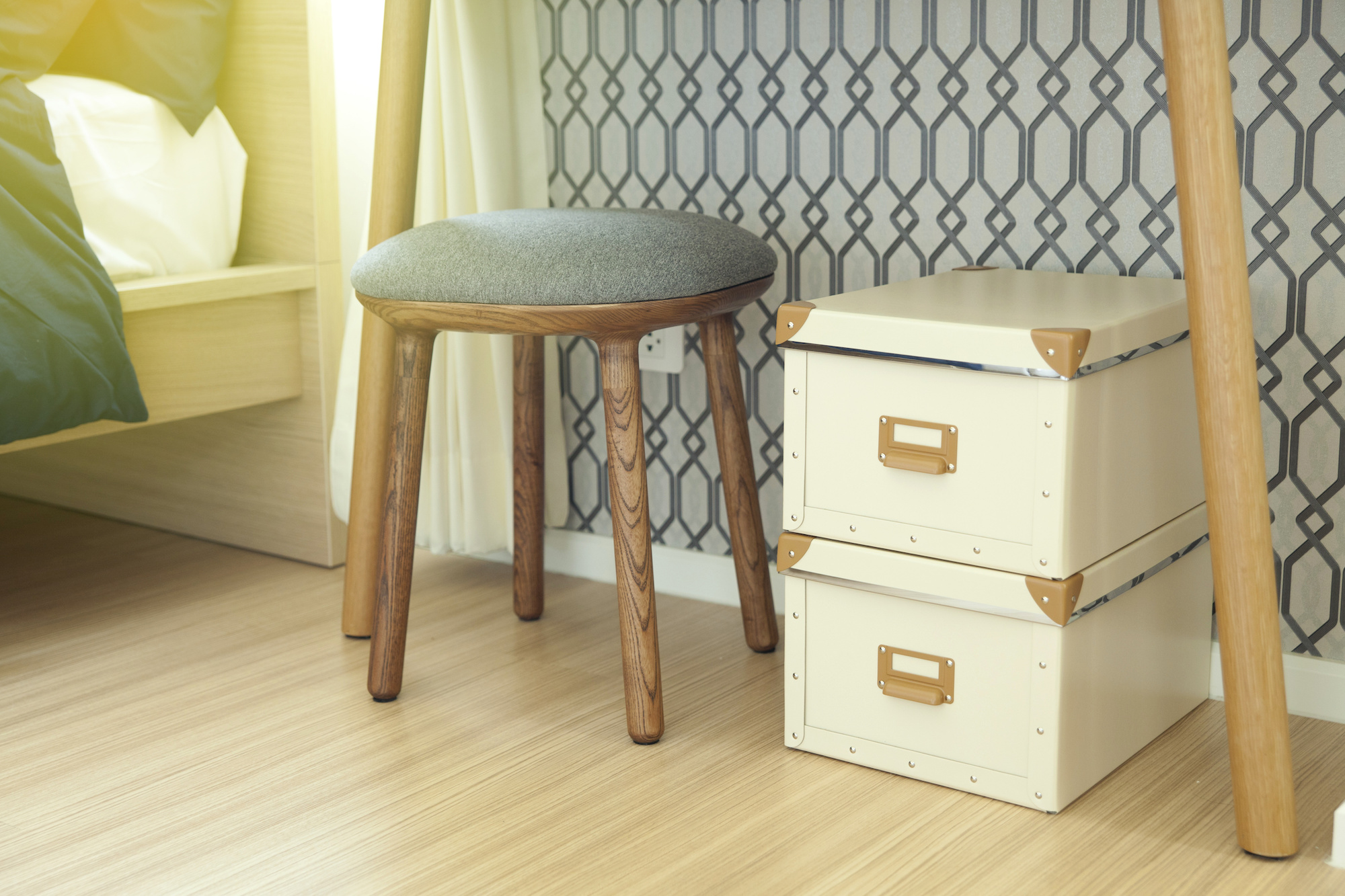8 Tips for organizing a small closet
When you’re moving into a new apartment, especially one without extra space for storage outside your unit, your closets will have to do double duty—or for micro apartments, triple duty. Closet storage is important for daily tasks such as accessing clothing and pantry items, and if you’re using your closets for longer-term storage, organization ideas can make your life much easier. Whether you’ve scored a walk-in closet or you’re contending with a small closet, here’s how to maximize your closet space.

Table of contents
Spend time living in the spaceSort and purgeSort by type of clothing storageCreate secondary storageMaximize vertical spaceTry storage cubes, shelf dividers, and drawersUtilize wall spaceOrganize with binsSpend time living in the space
If you just moved in, spend some time living in your new apartment before making a plan for your closet system. Note how you are using (or not using) the space:
Which parts of the closet do you naturally reach toward?
Where are you likely to toss your clothes at the end of a long day?
Where do items accumulate to be forgotten instead of being used?
What are your most-used and least-used items?
What are the hardest parts of your closet to reach?
Once you have a good idea of what areas of the closets are most and least accessible, start matching up the items in your “keep” pile to those sections. The items you use most often should be the most accessible, the items you use less often, less accessible, and so on.
Sort and purge
If you’re an organized person or are the type of person who does regular closet purges, you probably went through your belongings before you made the move. If you haven’t purged yet, the task can be intimidating, but it’s an important step toward freeing up extra storage space—especially in a small space.
When going through a large number of your personal belongings, try separating everything into the following categories:
Things you’re keeping:
Use frequently
Use infrequently, but want to keep
Use rarely or never, but want to keep
Things you’re not keeping:
Good condition, could be donated or re-sold
Poor condition, needs to be recycled or thrown away
Trash
Once you’ve categorized everything, put the things you’re not keeping by the door, or load them into your car right away so you remember to drop off donations and items to be recycled or tossed. Check out services like Ridwell that help you recycle uncommon household items before you throw something in the dumpster.
Sort by type of clothing storage
The most common types of clothing storage in closets are hanging, shelves, and bins. What type of storage is most accessible to you depends on your habits, so keep that in mind. If you’re a highly visual person, you might want to max out your hanging space so you can see your clothing options versus having to dig in a bin or drawer. You can even hang purses on the hanging rod using shower hooks to hold them by the handles.
If you know up-front that you’ll have little patience for hanging clothes, maybe folding and stacking your tee shirts and jeans on a shelf is a better bet. If you prefer to toss your clothes straight from the laundry bin into another bin, or you often find yourself rifling through your dresser drawers, bins might be the best choice for you.

Create secondary storage
For the items you use rarely but still need to keep, as well as out-of-season clothing, figure out a less easily accessible location. Under-the-bed storage bins are great for not just under the bed but underneath other furniture items, if they fit, or stacking beneath other bins on the floor or very upper shelves of a closet.
Maximize vertical space
Many closets have more vertical space than horizontal, whether between the floor and the clothing bar or between the bottom and top of a shelf. One way to maximize this space is to insert shelves, in which it’s possible to fold and stack more clothing if it doesn’t need to be hung.
You can also place smaller items in storage cubes and place them on a high shelf, making it easy to pull down the contents when you need to access them. If you’re not tall, buying a small step stool can also be an easy way to make high spaces more usable.
Try storage cubes, shelf dividers, and drawers
Not every item demands the same storage solution. Scarves, for instance, might do well balled up in a basket, while a large tee shirt collection must be folded and stacked vertically for maximum navigational ease.
If your closet comes with shelves or drawers that are too large for the items you’ve chosen to store there, try drawer or shelf dividers to avoid socks wandering over into underwear territory. If you're working with a basic closet with only a hanging rod and an upper shelf, consider installing a custom organizing system to meet your individual needs.

Utilize wall space
When organizing a small closet, you want to maximize every space—even the walls! Exposed walls can be used to place hooks where you can hang jewelry, belts, scarves, hair accessories, and more. You can also install a hanging organizer on the back of the closet door to hold accessories or shoes.
Utilizing wall and door space can free up space on the floor of the closet for larger items like luggage, storage bins for seasonal clothing, and even sports equipment.
Organize with bins
Not all clothing needs to be hung or folded. For example, things like scarves, belts, socks and underwear, workout clothes, and linens are often easier to store in bins rather than folding or taking up hanging space.
Try buying 4 or 5 of the same type of bin and hiding the organized chaos inside. Organizing a small closet will become more manageable that way.
Most closets seem too small if you don’t take the time to think about how to organize them. But closet organization can also be daunting; it’s so tempting to shove everything inside and call it a day. But, thinking about how to design an organized closet can make your everyday life easier, cut down on stress, and reduce mental clutter as well as closet clutter.
Bungalow is the best way to live with roommates. Our homes are designed for shared living, located in the best neighborhoods, and take care of the details—like furnishing common spaces, scheduling monthly cleanings, and handling payments. Whether you already have roommates or are looking for new ones, there’s a Bungalow with your name on it. Find your Bungalow.
Ready to find your next home?
Move-in ready homes and a built-in community so you can feel at home, together — wherever you are.
Suggested articles



